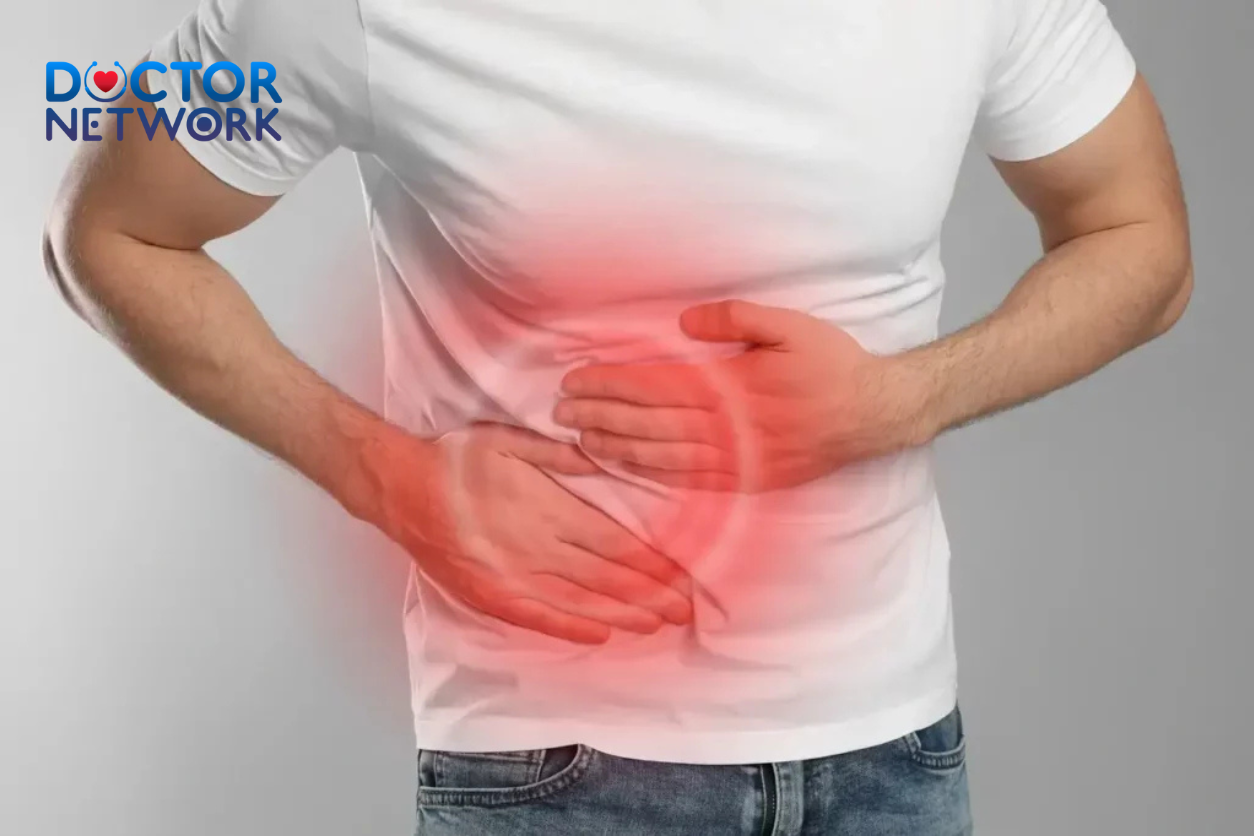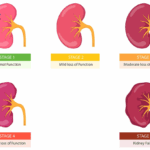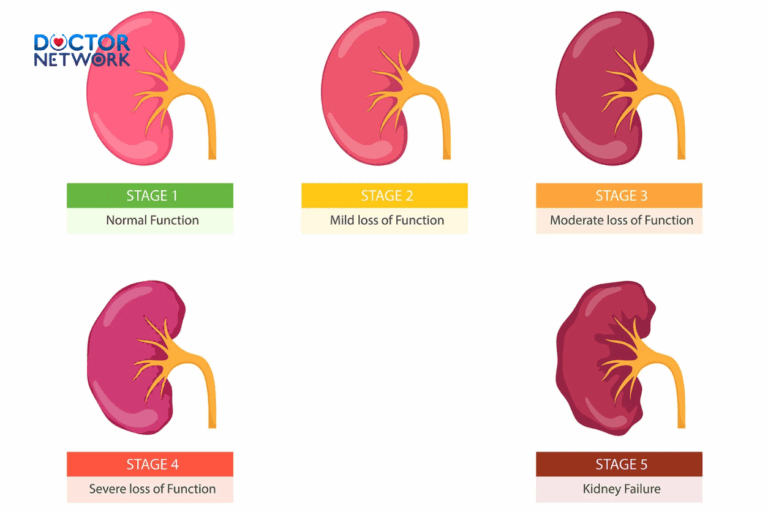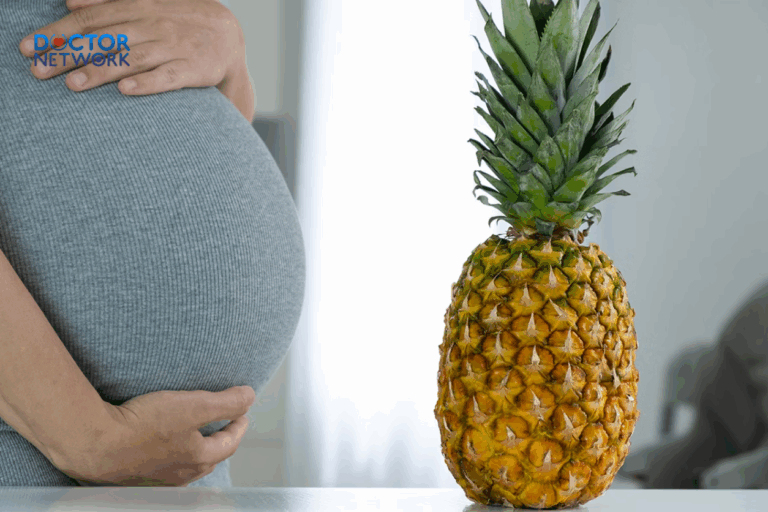Appendicitis affects approximately 5% of the US population during their lifetime, making it one of the most common causes of abdominal pain requiring emergency surgery. While the exact cause of appendicitis remains unclear, emerging research suggests certain dietary patterns and food choices may increase the risk of developing this potentially life-threatening condition. Understanding the relationship between nutrition and appendicitis risk empowers individuals to make informed dietary decisions that support digestive health and potentially reduce their vulnerability to this acute medical emergency.
Can Certain Foods Trigger Appendicitis? – This comprehensive guide examines the scientific evidence linking specific food groups to appendicitis risk, explores the mechanisms behind these associations, and provides practical recommendations for prevention and recovery. We’ll cover the foods that may increase appendicitis risk, proper symptom recognition, treatment approaches, and evidence-based dietary strategies for maintaining optimal digestive health.
Appendicitis represents an inflammatory condition affecting the vermiform appendix, a small finger-like structure located in the lower right abdomen where it connects to the large intestine. Medical professionals classify the appendix as a vestigial organ—an evolutionary remnant with no clearly defined primary function, though it may contribute to antibody production during childhood development.
The pathophysiology of appendicitis typically involves obstruction of the appendiceal lumen, leading to bacterial proliferation, pus formation, and increased internal pressure. This cascade of events can rapidly progress from mild discomfort to severe complications, including perforation, peritonitis, and sepsis if left untreated.
Prevalence and Clinical Significance
Statistical data reveals appendicitis as a leading cause of emergency abdominal surgery worldwide. The condition demonstrates no significant gender preference, affecting males and females equally across most age groups. Peak incidence occurs between ages 10-30, though appendicitis can develop at any age.
The inflammatory process begins when the appendiceal opening becomes blocked by various factors, including:
- Hardened stool (fecalith)
- Enlarged lymphoid follicles
- Foreign bodies
- Parasitic infections
- Tumors (rare)
Dietary Connections to Appendicitis Risk
Contemporary research increasingly focuses on the relationship between dietary habits and appendicitis development. While no single food can definitively cause appendicitis, certain nutritional patterns appear to influence risk factors through multiple mechanisms:
Inflammatory Pathways: Processed foods high in saturated fats and refined sugars can trigger systemic inflammation, potentially affecting digestive tract health and immune function.
Gut Microbiome Disruption: Poor dietary choices may alter the intestinal bacterial balance, promoting harmful bacterial growth while reducing beneficial microorganisms.
Digestive Function Impairment: Low-fiber diets can lead to constipation and altered bowel movement patterns, potentially increasing pressure within the digestive system.
Foods That May Increase Appendicitis Risk

Scientific literature identifies several food categories that may elevate appendicitis susceptibility through various biological mechanisms. Understanding these associations helps individuals make informed dietary choices while recognizing the limitations of current research.
Processed Meats and Fried Foods
Consumption of processed meats (sausages, bacon, deli meats) and fried foods (french fries, fried chicken) shows statistical correlation with increased appendicitis risk in multiple epidemiological studies.
Mechanistic Explanation: These foods typically contain elevated levels of unhealthy fats, sodium, and chemical preservatives that can promote digestive tract inflammation and tissue damage. The high fat content combined with low fiber levels may contribute to constipation, inflammatory responses, and mucosal injury throughout the gastrointestinal system, potentially increasing infection susceptibility and appendiceal obstruction risk.
Supporting Evidence: A landmark study published in JAMA Pediatrics demonstrated that children consuming fast food and fried items more than three times weekly showed significantly higher appendicitis rates. Additionally, research in the journal Gut established connections between diets rich in red meat and processed meat products with increased appendicitis risk in both male and female populations.
| Food Category | Risk Mechanism | Scientific Evidence |
|---|---|---|
| Processed Meats | High sodium, preservatives, low fiber → inflammation | JAMA Pediatrics study |
| Fried Foods | Trans fats, inflammatory compounds → digestive damage | Gut journal research |
| Fast Food | Combined risk factors → multiple pathways | Multiple epidemiological studies |
High-Fat and High-Cholesterol Foods
Dietary items including full-fat cheese, butter, fatty meats, and cream-rich desserts demonstrate associations with appendicitis risk in observational studies.
Underlying Mechanisms: These foods present digestive challenges due to their complex fat composition, potentially leading to gastrointestinal complications such as constipation and bowel movement irregularities. The inflammatory cascade triggered by high-cholesterol foods may contribute to digestive tract irritation and bacterial overgrowth. In rare instances, cholesterol-rich diets may contribute to gallstone formation, which can occasionally cause appendiceal obstruction.
Refined Carbohydrates and High-Sugar Snacks
Multiple research investigations suggest refined carbohydrate consumption and sugar-laden snack foods may contribute to appendicitis risk elevation.
Biological Pathways: These food products cause rapid blood glucose spikes and insulin fluctuations, promoting inflammatory responses throughout the digestive system. Elevated sugar intake correlates with gut microbiome alterations, encouraging harmful bacterial proliferation while suppressing beneficial microorganisms. This microbial imbalance can lead to increased digestive disorders, including potential appendicitis development.
Clinical Considerations: Moderate consumption may not pose significant risks, but frequent intake of large quantities appears to elevate risk factors substantially.
Dairy Products and Lactose-Rich Foods
The relationship between dairy consumption (milk, cheese, ice cream) and appendicitis risk remains incompletely understood, though some studies suggest potential correlations.
Proposed Mechanisms: Individuals with lactose intolerance may experience incomplete lactose digestion, resulting in symptoms including bloating, diarrhea, and abdominal discomfort. These digestive disturbances may contribute to constipation patterns and appendiceal inflammation. Lactose malabsorption can also disrupt gut microbiome equilibrium.
Evidence Limitations: Current scientific evidence remains inconclusive, requiring additional rigorous research for definitive conclusions.
Spicy and Acidic Foods
Although direct research remains limited, some investigations suggest spicy and acidic foods may contribute to digestive tract irritation and inflammatory responses.
Mechanistic Theories: Capsaicin compounds in spicy foods can cause mucosal irritation, while acidic foods (citrus fruits, tomatoes, vinegar) may stimulate digestive tract inflammation. These effects could potentially increase infection susceptibility and appendiceal obstruction risk, particularly in individuals with pre-existing digestive sensitivities.
Seeds and Low-Fiber Foods
In rare circumstances, seeds or incompletely digested food particles may become lodged in the appendiceal opening, contributing to inflammatory responses.
Low-Fiber Diet Concerns: Insufficient dietary fiber intake represents a recognized risk factor because it can lead to digestive difficulties and constipation, increasing pressure and obstruction risk throughout the intestinal system, including the appendix.
Recommendation Limitations: While dietary guidelines exist, it’s crucial to understand that no specific food has been definitively proven to “cause” or “prevent” appendicitis absolutely. Many associations remain “unclear” or “require further research.” Recommendations primarily focus on promoting overall digestive health rather than targeting specific foods.
Recognizing and Diagnosing Appendicitis
Early recognition of appendicitis symptoms represents a critical factor in preventing serious complications and ensuring optimal treatment outcomes. The condition’s presentation can vary significantly between individuals, making accurate diagnosis challenging even for experienced healthcare providers.
Classic Symptom Patterns
Abdominal Pain Characteristics: The hallmark symptom typically begins as diffuse periumbilical pain (around the navel) that gradually migrates and localizes to the right lower quadrant, specifically at McBurney’s point. Pain intensity progressively increases and becomes more severe over time.
Associated Gastrointestinal Symptoms: Patients commonly experience nausea, vomiting, and appetite loss (anorexia). Bowel movement patterns may become irregular, with some individuals developing constipation while others experience diarrhea. Abdominal distension and difficulty passing gas may also occur.
Systemic Manifestations: Low-grade fever affects approximately 40% of patients, often accompanied by general malaise and fatigue. Urinary symptoms, including frequency and urgency, may develop due to appendiceal inflammation affecting nearby structures.
Patient Perspective: Individuals often describe feeling exhausted, lacking energy and motivation, with a strong desire to rest as they would during any illness. Many patients initially mistake these symptoms for common stomach upset or food poisoning.
Physical Examination Signs
Healthcare providers utilize specific physical examination techniques to assess appendicitis probability:
McBurney’s Sign: Maximum pain and tenderness occurs when pressure is applied to McBurney’s point, located approximately two inches along the line from the anterior superior iliac spine to the umbilicus.
Blumberg’s Sign (Rebound Tenderness): Pain intensity increases when the examiner’s hand is rapidly released after applying pressure to the affected abdominal area.
Additional Diagnostic Signs:
- Dunphy’s Sign: Pain exacerbation with coughing
- Rovsing’s Sign: Right lower quadrant pain when pressure is applied to the left lower quadrant
- Psoas Sign: Pain with hip flexion against resistance
- Obturator Sign: Pain with internal rotation of the flexed right hip
Important Note: These signs are for educational purposes only and do not replace professional medical evaluation.
Differential Diagnosis Considerations
Appendicitis symptoms can mimic numerous other conditions, particularly in female patients, leading to diagnostic challenges:
| Condition | Key Distinguishing Features |
|---|---|
| Gastroenteritis | Prominent vomiting, diarrhea, often affecting multiple family members |
| Urinary Tract Infection | Dysuria, urinary frequency, abnormal urinalysis |
| Ovarian Cyst | Pelvic pain, menstrual irregularities, pelvic examination findings |
| Crohn’s Disease | Chronic symptoms, weight loss, family history |
| Pelvic Inflammatory Disease | Pelvic pain, vaginal discharge, sexual history |
Medical Diagnostic Procedures
Clinical Assessment: Physicians conduct detailed symptom histories and comprehensive physical examinations, focusing on abdominal tenderness, muscle guarding, and specific diagnostic signs.
Laboratory Studies:
- Complete Blood Count: Elevated white blood cell count indicates inflammatory response
- C-Reactive Protein: Elevated levels suggest systemic inflammation
- Urinalysis: Helps exclude urinary tract infections and kidney stones
Imaging Studies:
- Ultrasound: Non-invasive first-line imaging, particularly useful in children and pregnant women
- CT Scan: Highly accurate for appendicitis diagnosis, can identify complications
- MRI: Alternative imaging when CT is contraindicated
Diagnostic Laparoscopy: In uncertain cases, minimally invasive surgical exploration may provide definitive diagnosis while allowing immediate treatment if appendicitis is confirmed.
Treatment and Recovery Approaches
Modern appendicitis management has evolved significantly, with treatment strategies tailored to disease severity, patient characteristics, and institutional capabilities. Understanding available options helps patients and families make informed decisions about care.
Surgical Treatment (Appendectomy)
Standard of Care: Surgical removal of the appendix remains the definitive treatment for most appendicitis cases, effectively eliminating future appendicitis risk.
Laparoscopic Appendectomy: This minimally invasive approach utilizes small incisions and specialized instruments, offering several advantages:
- Reduced postoperative pain
- Shorter hospital stays
- Faster recovery times
- Improved cosmetic outcomes
- Lower infection rates
Open Surgical Approach: Traditional open surgery may be necessary when:
- Appendiceal perforation has occurred
- Significant complications are present
- Laparoscopic equipment is unavailable
- Patient anatomy makes laparoscopic approach unsafe
Surgical Outcomes: Following successful appendectomy, patients experience complete resolution of appendicitis risk. Complications are rare with timely intervention, and most individuals return to normal activities within 2-6 weeks.
Non-Surgical Management
Antibiotic Therapy: In carefully selected cases of uncomplicated appendicitis, antibiotic treatment may be considered as an alternative to immediate surgery.
Selection Criteria: This approach is reserved for patients with:
- Early, mild appendicitis without complications
- High surgical risk due to medical comorbidities
- Patient preference after thorough counseling
- Limited access to surgical facilities
Treatment Limitations: Non-surgical management carries significant limitations:
- Recurrence rates approach 40% within one year
- Risk of progression to complicated appendicitis
- Need for close monitoring and potential emergency surgery
- Limited long-term efficacy data
Missing Information Gap: Current sources lack specific details regarding antibiotic selection, dosing protocols, duration of treatment, and precise patient selection criteria, indicating this remains a highly specialized treatment option requiring expert medical judgment.
Recovery Nutrition and Dietary Support
Foods for Prevention and Digestive Support:
High-fiber options promote digestive health and prevent constipation:
- Whole Grains: Oatmeal, whole wheat bread, brown rice instead of white rice
- Fresh Produce: Leafy greens, fresh fruits, sprouted legumes
- Fiber-Rich Options: Quinoa, barley, chia seeds, flaxseeds
Probiotic-Rich Foods: Buttermilk and fermented foods help reduce inflammation, improve digestion, and prevent harmful bacterial overgrowth.
Anti-Inflammatory and Antimicrobial Foods:
| Food | Primary Benefits | Active Compounds |
|---|---|---|
| Turmeric | Strong antimicrobial, infection prevention, inflammation reduction | Curcumin |
| Ginger | Detoxification, inflammation reduction, nausea relief | Gingerols |
| Fenugreek Seeds | Constipation relief, bowel motility support, detoxification | Fiber, saponins |
| Garlic | Antioxidant, anti-cancer, anti-inflammatory properties | Allicin |
Beneficial Juices: Beet, cucumber, and carrot juices may help reduce pain and digestive discomfort.
Specific Recommendations: Mung beans (green grams) are particularly recommended for appendiceal pain relief, while lemon provides vitamin C support and digestive assistance.
Post-Surgical Recovery Protocol
Immediate Recovery Timeline: Patients undergoing uncomplicated laparoscopic appendectomy may return home the same day. Complete recovery typically occurs within six weeks. Complicated cases or open surgery may require extended hospitalization.
Post-Operative Dietary Progression:
- Initial Phase: Clear liquids including broths, coconut water, and buttermilk
- Advancement: Gradual introduction of soft, easily digestible foods
- Long-term: Focus on immune system support and liver function enhancement
Nutritional Priorities: Recovery nutrition should emphasize:
- Vitamin A and C supplementation
- Zinc for wound healing
- Glutamine for intestinal repair
- Omega-3 fatty acids for anti-inflammatory effects
- Citrus fruits (oranges, lemons, guava) for vitamin C
- Beta-carotene sources (carrots, sweet potatoes)
Recovery Information Gaps: Current sources lack detailed guidance on wound care protocols, activity restrictions during various recovery phases (such as lifting limitations and exercise restrictions), warning signs requiring medical attention (fever patterns, wound drainage, increasing pain), and comprehensive nutrition plans tailored to specific recovery stages.
Scientific Evidence and Recommendation Limitations
Current understanding of the relationship between diet and appendicitis risk requires careful interpretation within the context of existing research limitations and methodological constraints.
Ongoing Research Developments
Evolving Understanding: While suggestive associations exist between certain dietary patterns and appendicitis risk, the exact causal mechanisms remain incompletely understood. Many relationships continue to be classified as “unclear” or “requiring additional research.”
Absence of Definitive Causation: No specific food item has been conclusively proven to “cause” or “prevent” appendicitis with absolute certainty. The multifactorial nature of appendicitis development involves complex interactions between genetic predisposition, environmental factors, and individual susceptibility.
Focus on Overall Digestive Health: Current dietary recommendations emphasize promoting comprehensive digestive wellness and maintaining balanced gut microbiome through fiber supplementation and avoidance of potentially harmful foods, rather than targeting specific food restrictions.
Evidence Quality Assessment
Limited Research Scope: The level of scientific evidence supporting specific nutritional prevention recommendations remains constrained. More rigorously controlled studies are needed to establish clear causal relationships between individual food types and appendicitis risk.
Study Design Challenges: Appendicitis research faces inherent difficulties due to:
- Acute nature of the condition
- Ethical constraints on prospective studies
- Multiple confounding variables
- Individual genetic and environmental variations
Future Research Directions: Emerging areas of investigation include:
- Gut microbiome analysis in appendicitis patients
- Genetic susceptibility markers
- Inflammatory biomarker patterns
- Dietary intervention studies
Comprehensive Health Management and Related Considerations
Effective appendicitis prevention and management extends beyond dietary modifications to encompass broader health management strategies and understanding of the condition’s wider impacts.
Digestive Health Optimization
Holistic Approach: Maintaining optimal digestive system function serves as the foundation for reducing risk of various intestinal disorders, including appendicitis. A fiber-rich, balanced diet supporting beneficial gut bacteria represents the cornerstone of digestive wellness.
Importance of Timely Medical Intervention
Critical Nature of Early Recognition: Prompt identification of appendicitis symptoms and immediate medical attention are absolutely essential for preventing serious complications and potentially fatal outcomes. Delayed treatment significantly increases the risk of appendiceal perforation, peritonitis, sepsis, and death.
Emergency Response: Individuals experiencing persistent abdominal pain, particularly when localized to the right lower quadrant, should seek immediate medical evaluation regardless of other symptoms.
Psychological and Social Impact
Mental Health Considerations: Appendicitis diagnosis and treatment can create significant psychological stress for patients, including pre-surgical anxiety, fear of complications, and concerns about recovery outcomes.
Social and Economic Burden: The condition can impose substantial financial costs and disrupt daily life, work responsibilities, or educational activities.
Information Gaps: To provide more comprehensive patient support, additional details are needed regarding average surgical costs, insurance coverage patterns, and specific life disruptions that patients and families typically encounter during diagnosis and recovery periods.
General Health Recommendations
Professional Medical Consultation: Always consult qualified healthcare professionals for any abdominal pain or digestive discomfort that persists or worsens.
Healthy Lifestyle Maintenance: Sustaining balanced nutrition and regular physical activity represents the most effective investment in long-term health and disease prevention.
Future Considerations: While current sources don’t address this topic, future developments may include improved early diagnostic tools (such as biomarker tests), alternative treatment approaches, and enhanced prevention strategies based on advancing medical research.
Conclusion – Can Certain Foods Trigger Appendicitis
While no specific foods have been definitively proven to cause appendicitis, emerging evidence suggests that limiting processed foods high in unhealthy fats and sugars while increasing fiber intake plays an important role in maintaining digestive health and potentially reducing disease risk. The relationship between diet and appendicitis remains an active area of medical research, with many associations requiring further scientific investigation.
Understanding appendicitis symptoms and seeking prompt medical care when they occur represents the most critical factor in ensuring positive treatment outcomes. Early recognition and intervention can prevent serious complications and save lives.
Ultimately, maintaining a healthy lifestyle with a balanced, nutrient-rich diet represents the wisest long-term investment in digestive health and overall wellness. While we continue to learn more about appendicitis prevention, focusing on proven strategies for digestive health optimization remains the most evidence-based approach available today.
5 Most Common Questions About “What Food Can Cause Appendicitis” with Answers
1. Are there any specific foods that directly cause appendicitis?
No specific foods have been proven to directly cause appendicitis. However, diets low in fiber and high in processed foods, fats, and refined sugars may increase the risk by causing constipation or blockage in the appendix, which can lead to inflammation.
2. Can eating fruit seeds or plant seeds cause appendicitis?
It is very rare but possible for fruit or plant seeds to cause blockage in the appendix. Such cases are extremely uncommon (less than 1%). Chewing food thoroughly and avoiding swallowing large seeds can help reduce this risk.
3. Does eating fried or fatty foods increase the risk of appendicitis?
Yes, consuming a diet high in fried foods, fatty foods, and processed meats may increase the risk of appendicitis because these foods can promote inflammation and slow down digestion, increasing the chance of appendix blockage.
4. Do spicy or sour foods cause appendicitis?
No, spicy or sour foods do not directly cause appendicitis. However, they may irritate the digestive system and worsen symptoms if appendicitis is already present. Sometimes, pain caused by spicy foods can be mistaken for appendicitis.
5. What kind of diet helps prevent appendicitis?
A diet rich in fiber—such as vegetables, fruits, and whole grains—helps reduce constipation and the risk of appendix blockage. Limiting processed foods, fried foods, high-fat foods, and refined sugars while drinking plenty of water supports digestive health and lowers the risk of appendicitis.
Scientific References
Part 1: The Myth of Seeds and Foreign Bodies in Food
This is the most common concern for many people. Can undigested seeds get lodged in the appendix and cause inflammation?
1.1. Scientific Evidence: An Extremely Rare Occurrence
Systematic reviews and case reports in medical literature indicate that while obstruction of the appendix by a foreign object from food is theoretically possible, it happens very infrequently.
Study: “Appendicitis caused by undigested fruit seeds: a systematic review”
Authors: S. Akbulut et al.
Source: Published in the World Journal of Gastroenterology in 2008.
Findings: The authors reviewed global medical literature and found very few documented cases. They concluded: “Acute appendicitis caused by plants seeds is a rare condition and there is no evidence to advise patients to avoid eating fruit and vegetables to prevent appendicitis.” In some statistics, the incidence of appendicitis caused by plant seeds is less than 0.05%.
Study: “An unusual cause of appendicitis: Ascaris lumbricoides” (a type of parasitic roundworm)
Authors: Sarfraz Ahmad et al.
Source: Published in the Journal of Indian Association of Pediatric Surgeons in 2007.
Findings: This study, along with many other reports, shows that other causes of obstruction, such as parasitic worms, are more common than plant seeds. This highlights that focusing on fruit seeds misrepresents the actual clinical reality.
Conclusion from this evidence: While a small, hard object like a seed could theoretically cause an obstruction, it is statistically insignificant. The appendix has mechanisms to clear itself, and its opening is generally large enough for most small food particles to pass through.
Part 2: The Scientifically Accepted Causes of Appendicitis
Modern science has identified that the primary cause of appendicitis is an obstruction of the appendiceal lumen (the inside of the appendix). When blocked, bacteria that normally live inside the appendix multiply, leading to infection, swelling, and pus formation.
The most common causes of this obstruction are:
Fecalith: This is the most common cause. A fecalith is a small, hardened mass of stool that gets trapped in the appendix.
Lymphoid Hyperplasia: The lymphoid tissue in the wall of the appendix swells, usually in response to an infection elsewhere in the body (like a viral gut infection or a sore throat). This is a common cause in children and adolescents.
Other Rare Causes: Tumors (benign or malignant), parasitic worms, or other foreign bodies.
Source: This information is widely accepted and documented in standard medical literature and by reputable health organizations.
Textbooks: Sabiston Textbook of Surgery, Harrison’s Principles of Internal Medicine.
Health Organizations: Mayo Clinic, Johns Hopkins Medicine, and the National Health Service (NHS) in the UK all list “blockage by stool (fecalith)” and “swollen lymphoid tissue” as the leading causes.
Part 3: The Indirect Link Between Overall Diet and Appendicitis Risk
While no specific food causes appendicitis, the overall dietary pattern can influence the risk. The most studied link is a low-fiber diet.
3.1. The Fiber Hypothesis
A diet low in fiber can lead to constipation and harder stools. This increases the likelihood of forming a fecalith—the number one cause of appendiceal obstruction.
Pioneering Research: “A low-fibre diet as a risk factor for appendicitis”
Author: Dr. Denis P. Burkitt, a famous surgeon and researcher known for his work on dietary fiber.
Source: Published in journals like The Lancet in the 1970s.
Findings: Dr. Burkitt observed that the incidence of appendicitis in rural African communities (with very high-fiber diets) was significantly lower than in Western countries (with low-fiber, high-processed food diets). He was the first to propose a strong hypothesis linking low fiber intake to an increased risk of appendicitis.
Supporting Studies: “Dietary fiber and the risk of acute appendicitis”
Context: Numerous epidemiological studies since Burkitt’s time have supported his hypothesis.
Source: Reviews and studies in journals like the British Journal of Surgery and the Annals of Surgery have consistently shown an inverse relationship between fiber intake and appendicitis risk.
Findings: These studies collectively show that higher dietary fiber intake is associated with a reduced risk of developing acute appendicitis. A high-fiber diet helps keep stool soft, promotes regular bowel movements, and reduces the chance of fecalith formation.
Kiểm Duyệt Nội Dung
More than 10 years of marketing communications experience in the medical and health field.
Successfully deployed marketing communication activities, content development and social networking channels for hospital partners, clinics, doctors and medical professionals across the country.
More than 6 years of experience in organizing and producing leading prestigious medical programs in Vietnam, in collaboration with Ho Chi Minh City Television (HTV). Typical programs include Nhật Ký Blouse Trắng, Bác Sĩ Nói Gì, Alo Bác Sĩ Nghe, Nhật Ký Hạnh Phúc, Vui Khỏe Cùng Con, Bác Sỹ Mẹ, v.v.
Comprehensive cooperation with hundreds of hospitals and clinics, thousands of doctors and medical experts to join hands in building a medical content and service platform on the Doctor Network application.


























